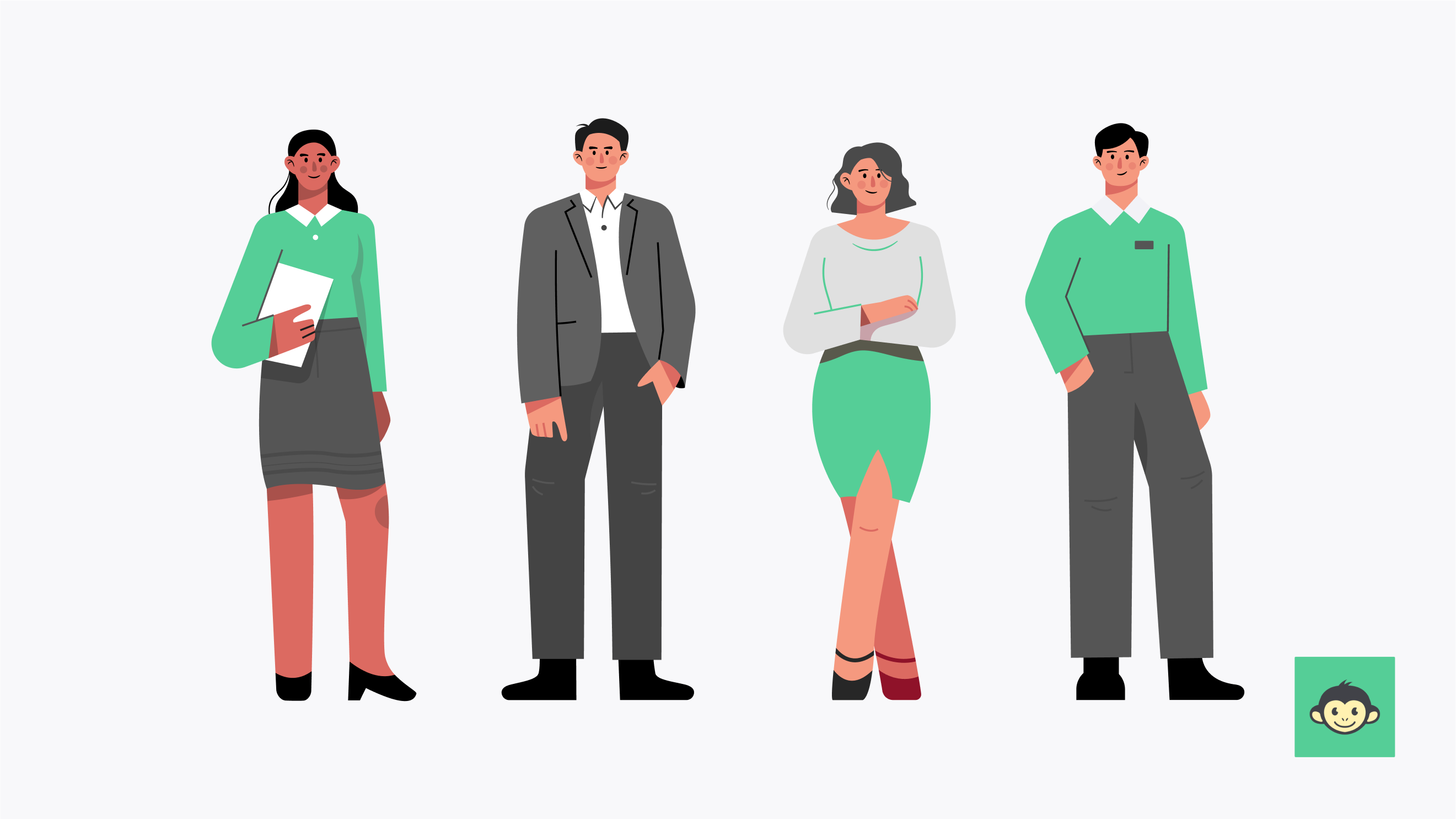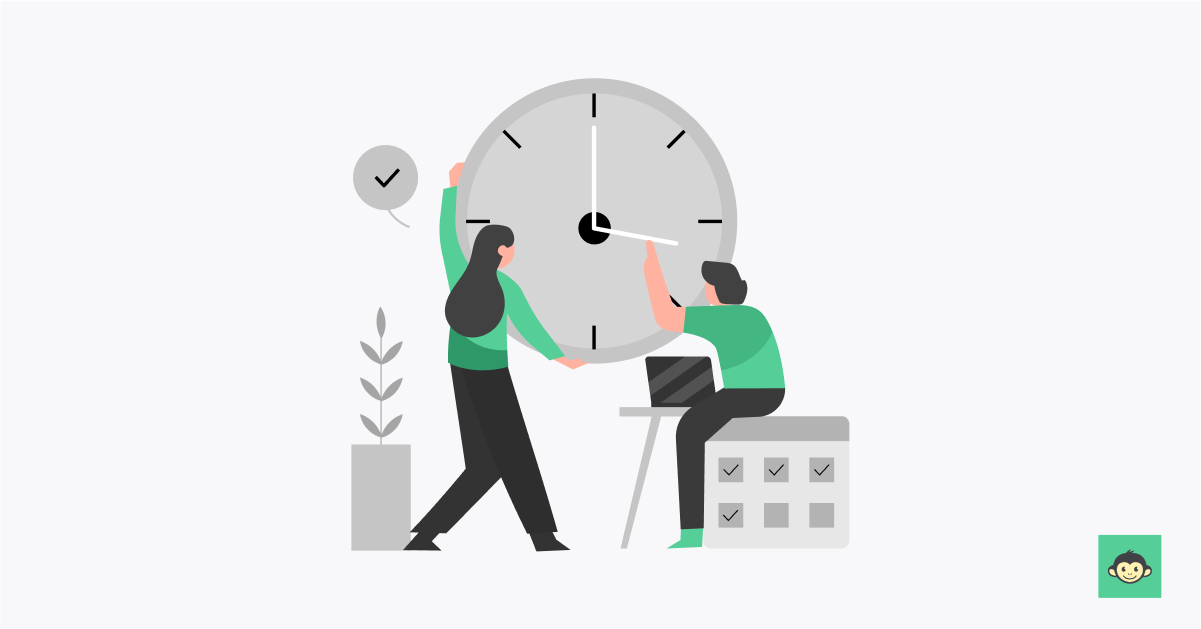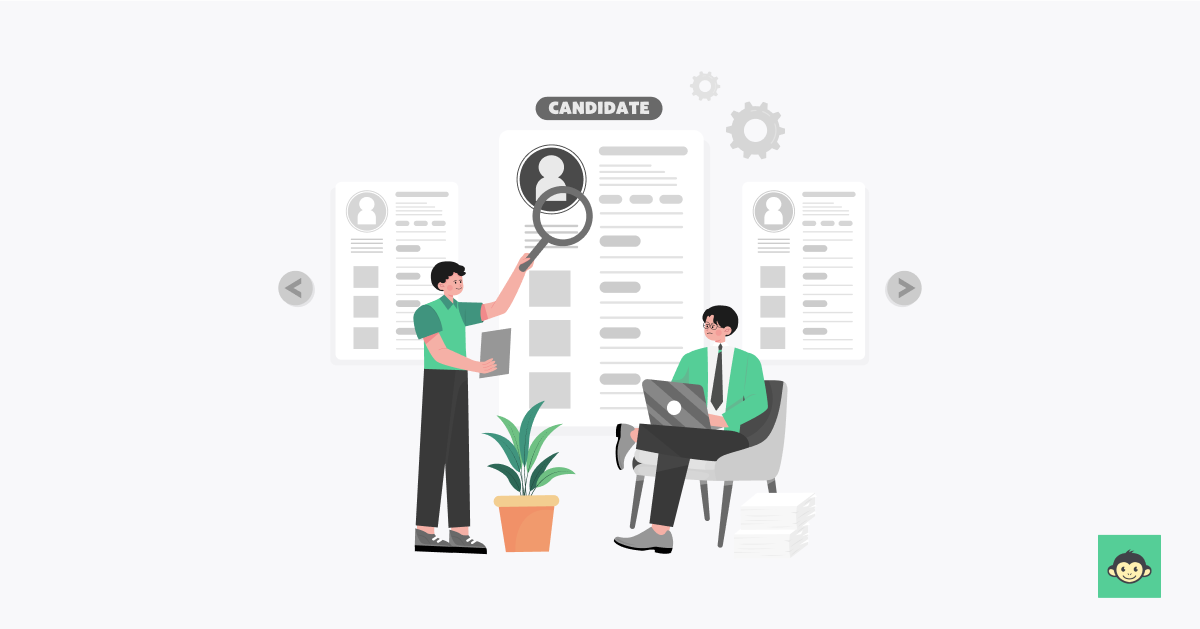What are types of employees: How to personalize engagement for them to keep motivated in 2024

In the ever-evolving landscape of the workplace, one size does not fit all when it comes to employee engagement and motivation. As we step into 2024, organizations are increasingly recognizing the importance of tailoring their approaches to the diverse types of employees working within their ranks.
Understanding and meeting the unique needs of each individual and employee type of employee can be the key to unlocking unprecedented levels of productivity, creativity, and job satisfaction.
We embark on a journey to explore the varied types of employees that make up the tapestry of the modern workforce.
More importantly, we delve into actionable strategies that will empower leaders and managers to craft personalized engagement initiatives, fostering a workplace culture where every team member feels seen, valued, and motivated to bring their best selves to the table.
How do you classify employees?

Employees in a diverse team can be categorized using various lenses.
Attitudinally, in any thriving workplace, you'll find a vibrant array of employee types, each contributing their unique strengths to the collective success of the team.
Meet the Ambitious Trailblazers, always seeking new challenges and pushing boundaries to achieve exceptional results.
Alongside them, the Steady Stalwarts provide a reliable foundation, consistently delivering quality work and maintaining a calm, stabilizing presence.
In the creative corners, the Innovative Visionaries are the idea generators, weaving imagination into projects and sparking innovation at every turn.
Meanwhile, the Precise Perfectionists uphold the company's payroll and standard of excellence, ensuring that every detail is meticulously crafted to perfection.
Social Butterflies, with their infectious energy, foster camaraderie and positive vibes, while the Thoughtful Observers quietly absorb and analyze, offering profound insights at just the right moments.
Based on their hours worked employment contacts, employees may also be categorized into full-time employees (FTEs) or permanent employees, Part-time employees, or temporary workers, or contract employees and freelancers.
Recognizing and catering to these diverse employee types and levels of involvement is the first step towards creating a harmonious and productive workplace.
By understanding their unique strengths, preferences, and motivators, organizations can personalize engagement strategies, ensuring that each team member feels valued and inspired to contribute their best to the collective success story.
In the mosaic of employee types, the key lies in embracing diversity, fostering inclusivity, and unleashing the full spectrum of knowledge and talent within the workforce.
What are the four main categories of workers?

There isn't a universally agreed-upon classification of employees into four specific employment types, as organizational structures and terminology may vary.
(Psst! While the employee classification policy is left at the mercy of employers, whether an exempt employee is exempt or not is regulated by the FLSA or the Fair Labor Standards Act)
However, based on their type of employer and employment contract, we can outline four common types of employees:
Full-time Employees (FTEs) or Permanent employees
These workers are individuals hired who work a standard or traditional workweek, typically 40 hours per week. They often receive benefits such as health insurance, retirement plans, and paid time off. Full-time employment is considered regular employment; full-time employees are regular, ongoing staff members.
Part-time employees
Part-time employees work fewer hours per week than full-time employees, often less than 30 hours per week. Part-time employees may or may not typically be eligible to receive the same pay and benefits as full-time employees, depending on the employer's policies on these part time employees.
Contract or temporary employees
Seasonal employees are hired for a set period for a specific duration, for a specific season or a particular project. They are not considered permanent staff members and may not receive the same benefits or pay as full-time employees. They may be paid on an hourly basis.
Temporary employees or seasonal employees are often brought in to address short-term needs or to handle both seasonal employees' and temporary employees' increases in workload. Seasonal and temporary employees make up the workforce of numerous organizations.
Independent contractors or freelancers
In contrast to temporary employees, independent contractors are self-employed individuals or companies who provide services to a company under a specific contract. They are not considered employees of companies, and are responsible for their own taxes, insurance, and other business-related expenses.
Independent contractors are hired for specific projects or routine tasks and are not bound by the same regulations and responsibilities as employees.
They have fewer company benefits and are similar to 'leased employees' from a staffing agency or similar institution. Leased employees are people who receive compensation from a staffing agency to perform work for a recipient company.
It's important to note that workplace dynamics can be complex, and these categories may overlap or be subject to different interpretations based on local labor laws and organizational policies.
Additionally, some classifications may include contingent workers or other contingent worker in categories such as seasonal workers such as interns, other seasonal workers, employees, or gig workers, depending on the context.
What are the different types of employees: A complete brief on how to motivate them

As mentioned before, employees can be classified attitudinally into the following based on their attributes:
Innovators and trailblazers
These employees thrive on challenges and are always eager to explore new possibilities. Acknowledge and celebrate their innovative ideas and solutions. Publicly recognize their contributions to inspire them and show that their creativity is valued.
Also assign projects that allow them to stretch their creative muscles. Provide opportunities for them to tackle new challenges and pioneer cutting-edge initiatives.
Steadfast stalwarts
The reliable backbone of the team, these individuals consistently deliver high-quality work. Recognize their reliability and consistent performance. Regularly acknowledge their efforts, emphasizing the importance of their stable contributions to the team.
Also offer opportunities for skill development and career advancement. Stalwarts often appreciate a clear path for growth within the organization.
Visionaries and dreamers
Employees in this category excel at envisioning the big picture and contributing innovative ideas. Connect their work to long-term organizational goals. Visionaries are motivated by a sense of purpose, so aligning their efforts with the broader vision of the company can be highly motivating.
Also provide platforms for them to share and explore their visionary ideas. This could include innovation workshops, brainstorming sessions, or collaborative platforms where they can express their creativity.
Precision perfectionists
Known for their meticulous attention to detail, these employees ensure accuracy and excellence in every task. Regularly acknowledge their attention to detail and the impact it has on the quality of the work.
Ensure that their efforts do not go unnoticed. Also make sure to provide clear guidelines and expectations for projects as they appreciate clarity and defined parameters to work within.
Collaborative connectors
Social butterflies who contribute to a healthy work culture by promoting communication and camaraderie. Foster a sense of community by organizing team-building events or activities.
This allows them to utilize their social skills while strengthening relationships within the team. Also ensure open lines of communication. Encourage them to share their ideas and concerns, making them feel heard and valued within the team.
Thoughtful observers
Quiet and reflective, these individuals absorb information and provide insightful analyses. Conduct regular one-on-one check-ins to provide a space for them to share their insights.
These employees may not always voice their thoughts in group settings, so personalized discussions can be valuable. Also create opportunities for them to contribute thoughtfully. This could involve forums for idea sharing or projects that require thoughtful analysis.
Adaptable all-stars
With a knack for versatility, their adaptability ensures the team stays resilient in the face of evolving circumstances. Provide diverse and challenging assignments to keep them engaged.
Adaptable individuals thrive on variety and enjoy the opportunity to learn and apply new skills. Also offer a degree of flexibility in their work arrangements. All-Stars often appreciate the autonomy to manage their tasks in a way that suits their adaptability.
Passionate contributors
Employees in this category are deeply committed to their work, driven by a genuine passion for what they do. Ensure that their tasks align with their passions and interests. Passionate contributors thrive when their work is meaningful and aligns with their personal values.
Also regularly acknowledge and appreciate their enthusiasm. Publicly recognizing their passion can inspire the entire team and create a positive atmosphere.
By tailoring motivation strategies to the unique characteristics of each employee type, organizations can have more flexibility and create a dynamic and supportive workplace culture that fosters engagement and brings out the best in every company's team members.
Why should employee types be a part of the modern HR strategy?

In the pulsating heart of modern HR strategy, the recognition and celebration of diverse employee types have become a resounding anthem for organizational success.
- Unlocking harmony: A workforce thrives on the harmonious collaboration of different employee types. Recognizing and leveraging these unique attributes allows organizations to unlock the full spectrum of talent and potential within their teams.
- Cultivating inclusivity: A kaleidoscope of employee types fosters a culture where everyone feels seen, heard, and valued. Inclusivity is not just a buzzword but a vibrant reality, creating an environment where individuals from all walks of professional life can contribute authentically.
- Boosting morale and engagement: When employees see their diverse strengths acknowledged and celebrated, it helps motivate them. This boosts morale, enhances job satisfaction, and propels engagement levels to new heights, creating a positive ripple effect throughout the organization.
- Tailoring personalized development paths: Modern HR isn't about one-size-fits-all; it's about bespoke development. Understanding employee types allows HR professionals to tailor personalized development paths, ensuring that each team member has the opportunity to grow and excel in alignment with their unique strengths and aspirations.
- Enhancing team dynamics: A winning team is a blend of diverse talents, each contributing to make the sum bigger than its parts. Embracing employee types enhances team dynamics, encouraging collaboration and innovation as individuals complement and amplify each other's strengths.
- Adapting to change: Recognizing and appreciating diverse employee types equips organizations to be agile and responsive, adapting to changes with grace and resilience.
- Attracting and retaining top talent: Organizations that celebrate diversity and offer a workplace where various employee types can thrive become magnets for top talent. A reputation for embracing individuality becomes a powerful beacon that attracts and retains the best and brightest.
- Elevating innovation and creativity: By embracing employee types, organizations create a fertile ground for innovation and creativity to flourish, propelling them into the forefront of their industries.
It's not just about recognizing differences; it's about turning those differences into a force that propels organizations toward success.
What should HR leaders do to understand employee types properly?

Understanding employee types and hiring them is not just a task—it's an art form that transforms a workplace into a thriving ecosystem of diverse talents.
Here are ten strategies for HR and business leaders to master the art of comprehending employee and job types and hiring them with finesse:
- Conduct open dialogues: Strike up open and honest conversations with employees. Create a space where they feel comfortable sharing their strengths, preferences, and aspirations. This open dialogue forms the cornerstone for understanding the unique melodies each employee brings to the team.
- Implement personality assessments: Introduce personality assessments that offer insights into individual working styles and preferences. These tools can be invaluable in unraveling the intricate compositions of your team, providing a roadmap for tailoring engagement strategies.
- Organize team-building activities: Foster a collaborative spirit through team-building activities. These exercises not only bring teams together but also showcase the diverse talents within the group. Observing how individuals contribute in different scenarios provides valuable insights for HR leaders.
- Encourage mentorship programs: Facilitate mentorship programs where seasoned employees can guide and understand the aspirations of their mentees. This two-way street of knowledge transfer sheds light on the unique qualities and potential growth areas of individuals within the organization.
- Leverage feedback: Establish regular feedback mechanisms that allow employees to express their preferences and share insights on their working styles. This creates a continuous loop of understanding, enabling HR leaders to adapt strategies in real time.
- Invest in training and development: Provide training that goes beyond skill enhancement to address the diverse learning styles of employees. Tailor development programs to accommodate different approaches, ensuring that each employee has the opportunity to flourish in their unique way.
- Promote a culture of inclusivity: Foster a culture where diversity is not only accepted but celebrated. By promoting an inclusive environment, HR leaders set the stage for individuals to bring their authentic selves to work, allowing for a richer understanding of the unique contributions each employee makes.
- Stay curious: Embrace curiosity as a guiding principle. HR leaders should approach their teams with a genuine desire to understand what makes each member tick. Be observant of nuances, celebrate achievements, and acknowledge the individual strengths that may not always be evident on the surface.
- Offer flexibility: Recognize that different employee types may thrive in different work environments. Offering flexibility in work arrangements demonstrates a commitment to understanding and accommodating diverse needs, fostering a more harmonious and productive workplace.
- Regularly review and adapt strategies: The dynamic nature of workplaces requires HR leaders to stay agile. Regularly review engagement strategies, gather feedback, and be willing to adapt approaches to better suit the evolving needs of the diverse employee types within the organization.
How can you make sure that you listen to all types of employees at work as a leader? How does it benefit the overall engagement at work?

Listening to all employees is a cornerstone of effective leadership that fosters an inclusive and engaged workplace. Here's a guide on how leaders of companies can ensure they listen to all employees and the profound benefits it brings to overall workplace engagement:
- Creating open channels of communication: Establish various channels for communication, including regular team meetings, one-on-one sessions, and anonymous feedback mechanisms. This ensures that employees, regardless of their communication styles, have avenues to express themselves.
- Encourage inclusivity in meetings: Create an inclusive meeting environment where all voices are valued. Encourage quieter team members to share their thoughts and ideas, and ensure that meetings are structured to allow for a variety of communication styles.
- Implement employee resource groups: Establish employee resource groups that focus on specific interests or backgrounds. These groups provide a platform for employees with common interests or experiences to express themselves and offer insights that may not be apparent in broader discussions.
- Practice active listening: Listen to what employees are saying without preconceived notions. Give your full attention, ask clarifying questions, and ensure that employees feel heard and understood. This promotes a culture where everyone's perspective is valued.
- Celebrate diversity: Cultivate a culture that celebrates diversity in all its forms. Encourage employees to bring their authentic selves to work, recognizing that different perspectives and backgrounds enrich the overall team dynamic.
There are several clear benefits to this:
- Increased engagement: Actively listening to employees signals that their opinions matter, fostering a sense of belonging and commitment. This increased engagement translates to higher levels of productivity and dedication to organizational goals.
- Enhanced problem-solving: A diverse range of perspectives is invaluable when it comes to solving complex problems. By listening to all employees, leaders can tap into a wealth of ideas and insights, leading to more innovative and effective solutions.
- Improved morale: Feeling heard and valued contributes significantly to employee morale. When employees know that their voices matter, it positively impacts their job satisfaction, motivation, and overall sense of well-being at work.
- Better decision-making: Inclusive decision-making, informed by a variety of perspectives, leads to more well-rounded and thoughtful choices.
Leaders who listen to all employees are better equipped to make decisions that resonate with the diverse needs of the team. - Stronger team collaboration: Active listening fosters an environment of trust and collaboration. Employees who feel heard are more likely to contribute their skills and talents collaboratively, leading to stronger and more cohesive teams.
- Enhanced employee retention: When employees feel their voices are valued, they are more likely to stay with the organization. Listening and responding to their needs helps create a positive workplace culture, reducing turnover and the associated costs.
- Positive employer branding: A workplace that actively listens to all employees becomes known for its inclusivity and employee-centric approach. This positive reputation enhances employer branding, making the organization an attractive place to work.
In summary, listening to all employee kinds is not just a leadership skill; it's a transformative strategy that contributes to a vibrant, engaged, and inclusive workplace.
By understanding and valuing the diverse perspectives within a company or other team members, leaders can cultivate an environment where every employee feels seen, heard, and empowered to contribute their best. This, in turn, leads to a harmonious and high-performing workplace culture
Conclusion
Acknowledging and celebrating diverse employees is not merely a strategy; it is a must to succeed. As we chart the course for the future, the key to sustained motivation and personalized engagement lies in the art of understanding, appreciating, and empowering each unique team member.
By embracing the strengths, preferences, and aspirations of diverse employee types, leaders pave the way for a workplace culture that resonates with positivity, inclusivity, and motivation.
Navigating the intricacies of hiring various employee types involves considerations of health insurance, retirement plans, and other benefits.
Companies often engage with staffing agencies to secure contingent workers or independent contractors, offering more flexibility in managing routine tasks or handling specific projects.
Leased employees add another layer to the workforce, bringing their unique contributions and expertise to the team.
The distinction between exempt and non-exempt employees, as well as leased workers such as those paid hourly or on a salary basis, impacts overtime pay and adherence to minimum wage regulations.
It is essential for HR professionals and employers alike to stay well-versed in these classifications to uphold fairness and compliance within the company's payroll.
As businesses look to the future, the trend of hiring contingent workers, recent graduates, and individuals seeking temporary employment for specific seasons or projects is likely to continue.
Embracing a diverse team that includes workers with varying interests, skills, and backgrounds can lead to a more dynamic and innovative workplace. Contact CultureMonkey for all the assistance you need to keep your teams motivated!



